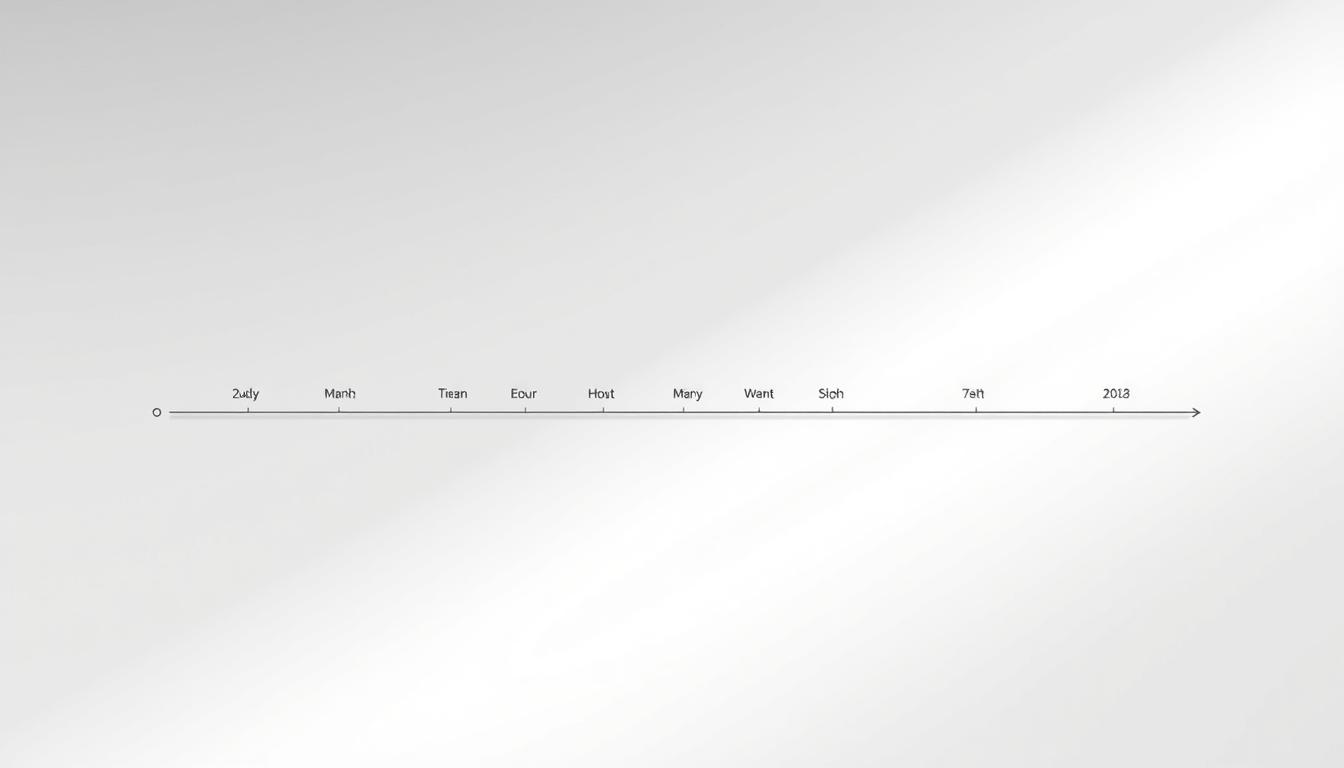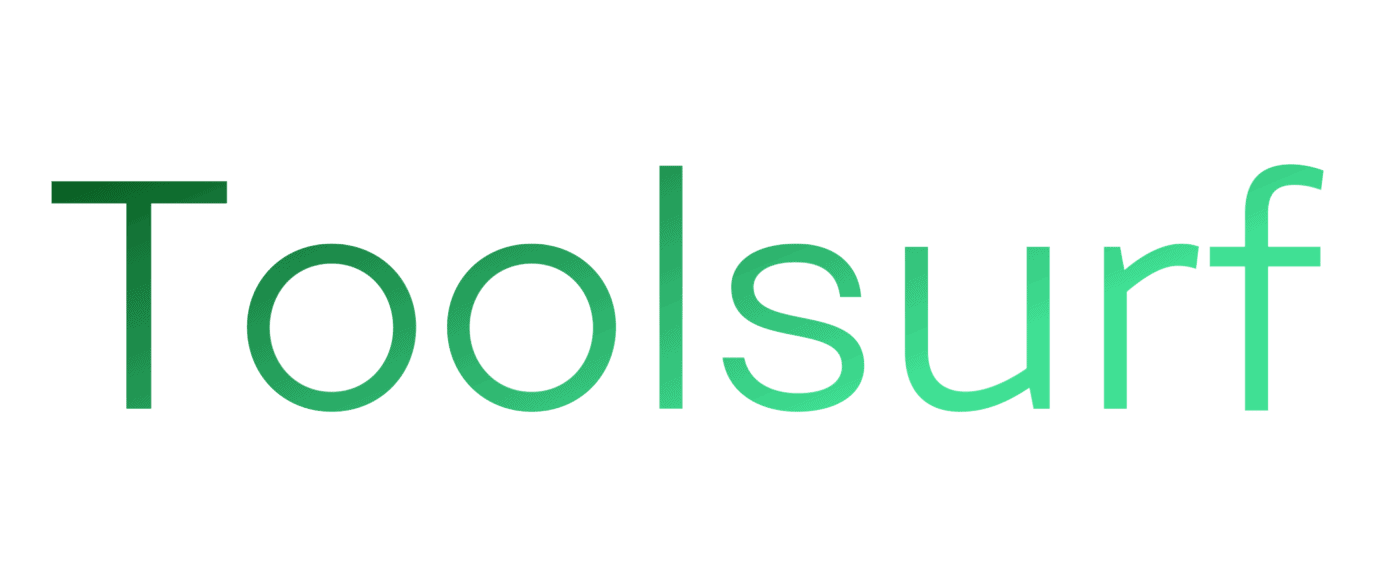Case Study: 0→50K Visits Using Budget SEO Tools
Can a lean team and low-cost tool access really turn a new site from zero to tens of thousands of visits?
This short case opens that question with a clear, practical answer. We used disciplined content execution, lightweight technical fixes, and smart link moves to spark early growth. Real examples—like a property app that hit 7–8K monthly visits and wins for Airmason—show what’s possible.
Toolsurf.com played a key role as a group-buy platform that gave instant access to premium tools for pennies. Trials at $1/day and all-in-one plans let the team focus spend on production rather than costly subscriptions.
Expect a step-by-step playbook: audits, fixes, burst publishing, and targeted internal links that earned featured snippets and compounding visibility. By the end, you’ll see how a pragmatic strategy and a disciplined workflow can create steady traffic and measurable results from day one.
Key Takeaways
- Lean execution plus selective tool access drives early growth without oversized fees.
- Publish clustered, focused content and fix key technical issues first.
- Internal linking and a few high-value links compound visibility fast.
- Measure outcomes, de-optimize to match SERPs, and iterate.
- Group-buy access can redirect spend from software into content and outreach.
- Followable milestones unlock steady traffic and long-term growth.
Executive Summary: From zero to 50K visits with a lean stack and smart execution
A compact team, an efficient stack, and deliberate publishing produced rapid early wins.
The goal was simple: increase organic traffic fast from a cold start. We picked low-difficulty topics, mapped intent, and focused on high-utility pages that convert. Toolsurf provided secure group-buy access to premium platforms—Ahrefs, Semrush, KWFinder, Moz—plus AI drafting and creative tools like Jasper AI, Peppertype, Midjourney, and Murf AI. That access kept spend low and work uninterrupted with $1/day trials and $3/mo plans.
Execution combined a two-month burst publishing phase with technical hardening. Editors used AI drafts, then verified originality and on-page quality. Link moves targeted relevance over raw authority. Early benchmarks from Airmason, DK Music Business Academy, and Moovshack guided pacing and expectations.
Outcome highlights: first meaningful clicks and impressions in month three to four, a featured snippet win, and steady compounding traffic as clusters deepened.
| Benchmark | Action | Timeframe | Result |
|---|---|---|---|
| Airmason | Topical clustering, programmatic posts | Monthly cadence | ~100 posts/month, rapid visibility |
| DK Music Business | Repurposed YouTube insights | 35 articles | 20,000+ clicks/month |
| Moovshack | Speed, canonical fixes, burst publish | Weeks to months | Snippet wins, major traffic lift |
Context, Constraints, and Goals for a Budget-First SEO Strategy
Starting cold, we prioritized moves that delivered measurable signals fast.
The starting point was straightforward: no authority, few ranking pages, and tight resources. The client expected fast learning and visible progress, so we set realistic timelines and measurable milestones.
Constraints included slow page renders (Moovshack’s ~16s load), an Apache/WordPress stack with JavaScript rendering issues, and slow approval cycles that limited developer time. A small team—one specialist and two writers—handled content and technical triage.
With Toolsurf’s $3/mo+ plans and $1/day trials, we reduced upfront costs for research and creative tools. That freed resources for writing and targeted technical fixes while 24/7 support kept the work moving.
Primary objectives and success criteria
Our goals were to increase organic traffic, validate the channel for the client’s business, and drive qualified clicks tied to conversion-focused clusters.
- Short-term signals: indexation, impressions, first rankings.
- Mid-term wins: featured snippet captures and cluster depth.
- Risk controls: expect slow initial traction and set client expectations on time.
Scope discipline kept the team focused on the narrow niche topics with the highest return. This approach let a lean project deliver compounding results while minimizing wasted effort.

Research Blueprint: Topic clustering, search intent, and keyword strategy
Our research began with user questions, not raw volume — that shift guided every cluster and brief.
We built a repeatable research process that used group-buy access to Ahrefs, Semrush, KWFinder, and Moz via Toolsurf to spot low-difficulty keyword opportunities fast.
Low-difficulty keywords and topical maps
Start with a topic tree that maps one primary intent to supporting pages. Each hub gets unique coverage so pages don’t cannibalize one another. Validate targets with SERP analysis to match format, length, and entities.
User pain points and community data sources
Mine forums, Reddit, Quora, and YouTube comments to capture real phrasing and pain points. Moovshack, DK MBA, and Airmason used this motion to turn questions into high-engagement pages.
Prioritizing conversion-driven terms and avoiding cannibalization
Prioritize conversion-focused keywords inside clusters even at lower volume. Draft briefs with FAQs, schema opportunities, and target SERP features like snippets and People Also Ask.
- Use Roundups.ai and Originality.ai for ideation and uniqueness checks.
- Accelerate first drafts with Jasper AI and Peppertype, then human-edit for clarity and accuracy.
- Maintain a living topical map to track covered nodes, SERP shifts, and competitor encroachment.
Outcome: a lean content plan that converts research into pages that drive traffic and authority for niche sites.
Technical SEO Foundations that Unlocked Crawling and Indexing
Fixing the plumbing of a website unlocked far more visibility than another round of content alone.
We began with Toolsurf-enabled audits using Ahrefs, Semrush, and Moz to flag duplicate paths, mixed protocols, and slow assets. KWFinder then helped prioritize which pages to fix first.
Rendering, canonicalization, and status codes
Eliminate blockers first. Fix mixed HTTP/HTTPS hosts, consolidate www and non‑www, and correct misconfigured rel=canonical tags. Remove multiple slashes and broken internal links that created duplicate paths and redirect chains.
Site speed and Core Web Vitals
Moovshack cut load time from ~16s to ~3.5s by removing a JS preloader and optimizing server response. We converted images to WebP with Designs.ai, deferred non‑critical JavaScript, and preloaded key assets to improve LCP.
Hierarchy, internal linking, sitemaps, and UGC
We reorganized the site into clear categories and subcategories, added breadcrumb schema, and kept high‑value pages within three clicks of the homepage.
For UGC, only index pages that pass quality thresholds (e.g., >1,000 characters and visitor engagement). Align XML sitemaps to include indexable, high‑quality pages only and exclude staging/test subdomains.
- Use audits to prioritize high‑impact fixes and re‑submit key pages in Search Console.
- Establish internal linking rules to connect clusters without over‑optimization.
- Track indexation and rankings after each sprint to catch regressions quickly.
| Issue | Action | Result |
|---|---|---|
| Mixed protocol & duplicate paths | Canonical host enforced; redirect chains cleaned | Faster indexation, fewer crawl errors |
| Slow initial render (LCP) | Remove blocking JS; WebP images; server TTFB improved | Load time cut from ~16s to ~3.5s |
| UGC overload | Set minimum content and engagement thresholds; probation before sitemap inclusion | Protected crawl budget and raised overall page quality |

Content Engine: Velocity, AI-assisted drafting, and quality at scale
We scaled output by blending programmatic outlines with human edits to keep quality high.
The process began with cluster-first outlines that standardize structure across related pages. Each outline maps entities, FAQs, and comparison blocks so writers and AI follow the same frame.
Workflow: AI tools—Jasper, Peppertype, and WordAI—generate first drafts. Editors then fact-check, tighten tone, and apply on-page optimization for titles, headers, and schema.
Originality.ai checked duplication while Designs.ai and Midjourney produced visuals. All tools were accessed through group-buy plans to keep velocity without sacrificing quality.
De-optimization and snippet targeting
When pages looked over-optimized, we tested softer headers and cut repetitive keywords. Moovshack used this to win a high-volume featured snippet.
- Target snippets with short definitions, lists, and tables near the top.
- Add FAQ schema to expand real estate in results.
- Link supporting articles to the pillar with descriptive anchors.
| Project | Monthly Output | Key tactic | Result |
|---|---|---|---|
| Airmason | ~100 articles | AI drafts + human edits | Authority build, faster coverage |
| Moovshack | 60 burst posts | De-optimization tests | Featured snippet win |
| DK MBA | 35 pages | Repurposed video topics | 20K+ clicks |
White-Hat Link Building on a Budget: Relevance over raw DR
Targeting the right editorial homes produced better results than chasing high DR alone.
We sourced prospects with Ahrefs and Semrush via Toolsurf and prioritized sites that send real referral traffic. Outreach focused on expert commentary, resource inclusions, and a handful of selective guest contributions.
Why this worked: Moovshack grew with fewer than 100 referring domains because each placement matched user intent and topical relevance. Placements on Metro.co.uk, EstateAgentToday.co.uk, and PropertyInvestorToday.co.uk drove targeted visits and steady visibility.
“A small number of relevant links beat a large list of weak domains when referrals and intent aligned.”
We used backlink gap analysis to spot must-have referring domains for priority pages. Then we set a minimum viable link velocity to avoid sudden spikes that look unnatural.
- Build lightweight, linkable assets: data roundups, definitions, and original research.
- Pitch concise, quotable expert commentary and keep an asset library for fast responses.
- Pursue selective guest posts that match intent and can rank on their own.
- Track link equity, diversify anchors, and interlink link-earning pages to money pages.
| Approach | Tools | Target | Outcome |
|---|---|---|---|
| Prospect sourcing | Ahrefs, Semrush (via Toolsurf) | Industry publications & resource pages | Higher referral traffic, relevance |
| Expert commentary | Journalist outreach, asset library | News sites and trade blogs | Fast placements, natural citations |
| Linkable assets | Data roundups, original research | Tech and marketing outlets | Organic links from high-traffic pages |
Budget Tool Stack via Toolsurf: Secure group-buy access to premium platforms
Access through a single portal streamlined tool handoffs and kept the production cycle tight.
Toolsurf provides cloud-based, secure, instant access to a wide suite of platforms. That access let our team run fast research and audits without long procurement cycles.
Research and audits
Use Ahrefs, Semrush, KWFinder, and Moz for keyword discovery and technical analysis. These tools helped surface low-difficulty opportunities and prioritize optimization fixes.
AI writing and creative tools
Draft faster with Jasper AI, WordAI, StealthWriter AI, and Peppertype AI. Keep originality checks with Originality.ai and ideation via Roundups.ai.
Visuals, video, and audio
Produce images at scale with Midjourney, Leonardo AI, and Designs.ai. Turn posts into short videos with InVideo Studio or Fliki, and add voiceovers via Murf AI to boost engagement.
- Start small: $1/day trials to validate workflows, then move to $3/mo plans.
- Packages: Lite $19.99/mo, Agency $29.99/mo, Enterprise $69.99/mo for broader access.
- Operational tip: Map each tool to a specific step—research, brief, draft, QA, publish—to keep the pipeline repeatable.
| Plan | Price | Use case |
|---|---|---|
| Lite | $19.99/mo | Small teams, validation |
| Agency | $29.99/mo | Higher velocity and multiple users |
| Enterprise | $69.99/mo | Full access, priority support |
“Group access let us reallocate tool fees into editorial reviews and outreach, driving measurable success.”
Timeline and Milestones: What happened, when, and why it worked
A practical rhythm of audits, publishing, and hardening kept progress predictable.
Month 0: Run baseline audits, fix critical crawling and indexing issues, and lock a cluster-based content calendar informed by community pain points. Toolsurf’s $1/day trials supported a try-then-scale approach so the team could validate tools before committing to $3/mo plans.
Months 1–2: Execute a burst publishing cadence of 30–60 articles to build topical breadth fast. Moovshack followed this plan with a planned burst and roughly £5,000/month for production. Early outreach secured initial relevant links and expert commentary.
Months 3–5: Harden technical seo: improve Core Web Vitals, fix canonicalization, and tidy internal linking. Perform de‑optimization tests on over‑optimized pages. Prioritize snippet-ready snippets and monitor performance for early wins.
Months 6–9: Consolidate gains, deepen cluster coverage, and maintain a steady link acquisition pace (under 100 targeted links over ~6 months in our example). Re-crawl priority pages after updates and use ongoing analysis to refine internal routing.

Results and Metrics: Rankings, clicks, and business impact
Charts from month three onward highlighted compounding growth as clusters matured and links landed.
The headline results show clear wins across traffic, rankings, and conversions.
Moovshack moved from near-zero to about 7–8K monthly visits after a featured snippet capture and ~60 focused pages. A SaaS client saw a +309% rise in a priority category (22K → 68K/month) after technical fixes and UGC moderation. Airmason delivered ~1300% growth with ~100 posts per month using AI drafts plus human edits.
Traffic growth trajectory and keyword coverage expansion
Early gains came from low-difficulty queries. As clusters deepened, the sites extended into mid-tier terms and long-tail queries.
Weekly monitoring with Toolsurf-enabled access to Ahrefs and Semrush tracked keyword movements, link growth, and top pages. That round-the-clock visibility aligned reviews with deployments and content pushes.
Top pages, featured snippets, and conversion-leading clusters
Featured snippet wins were the biggest step-changes in clicks and visibility. One snippet—“how to cancel your council tax”—drove the Moovshack lift and boosted related pages.
- Early outcomes: first impressions and clicks after crawl and index fixes.
- Breakout moment: snippet wins that cascaded traffic to cluster pages.
- Link contribution: a few relevant editorial links amplified authority for priority pages.
“Compounding execution—content, technical work, and targeted links—created predictable, nonlinear results.”
| Metric | Client example | Result |
|---|---|---|
| Monthly traffic | Moovshack | ~7–8K visits (from near-zero) |
| Category growth | SaaS client | 22K → 68K/month (+309%) |
| Traffic lift | Airmason | ~1300% with ~100 posts/month |
| Sales impact | Esports client | 2,300% increase in sales via clustering |
Measurement cadence: weekly checks for rankings, clicks, and snippet ownership; monthly reviews to reassign internal links and prioritize the next content wave.
Overall, the results show that modest link investment, focused content, and technical cleanup can noticeably increase organic traffic and clicks for niche sites. The growth was steady and measurable, and it supported real business outcomes without paid channels.
budget seo case study: Replicable playbook for teams on limited budgets
Start with a tight playbook that converts small teams into steady traffic engines.
Step-by-step checklist: audits, clustering, optimization, linking
Audit first. Fix rendering, canonicalization, status codes, duplicate paths, and speed. Align sitemaps and breadcrumbs and moderate UGC to protect crawl budget.
Research and cluster. Map pillars to supporting pages, validate SERP intent, and enforce one primary keyword per page to avoid cannibalization.
Draft at velocity. Use Jasper AI, Peppertype, or WordAI for first drafts and have editors polish tone and facts. Target snippets with short definitions, lists, and a concise table near the top.
On-page optimization. Refine titles, headers, schema, media, and internal links. Run de-optimization tests when pages look over-optimized versus top-ranking pages.
Link building. Target relevant resource pages and expert commentary. Fill backlink gaps with selective guest posts and aim for a minimum viable link velocity.
Resource allocation: where to spend vs. where to save
Save on software by using Toolsurf: $1/day trials for validation and $3/mo+ monthly plans. Lite, Agency, and Enterprise bundles scale to your team and keep uptime and 24/7 support so production never stalls.
Spend on editorial quality, visual assets from Midjourney or Designs.ai, and technical fixes that improve indexation and user experience. Invest selectively in outreach and linkable assets that lift rankings and increase organic traffic.
| Priority | Spend | Save |
|---|---|---|
| Indexing & speed | Developer time, image tooling | Premium discovery tools (use Toolsurf access) |
| Content & pages | Editors, visuals, AI drafts | Long full-price subscriptions (use $1/day trials) |
| Links & outreach | Selective guest posts, expert commentary | Large-volume link lists without relevance |
| Measurement | Ahrefs/Semrush via Toolsurf, Originality.ai | Redundant analytics platforms |
“Follow audits → focused pages → measured outreach. Small teams can increase organic performance consistently.”
Conclusion
Across industries, practical steps and repeatable rhythms produced measurable lifts in organic performance.
Toolsurf’s group-buy access, with $1/day trials and $3/mo plans plus all-in-one packages, gave the team dependable tool access and 24/7 support so small teams could ship consistently.
Evidence matters: Moovshack climbed to several thousand monthly visits with 60 pages and under 100 relevant links. A SaaS category rose +309% after technical hardening. Airmason hit ~1300% growth with AI-assisted clustering, and an esports client saw a 2300% sales increase through intent-aligned content.
Focus on audits, cluster-led content, on-page work, and targeted links. Iterate, protect technical health, and keep the team rhythm. That process turns content into steady acquisition and real business success.

